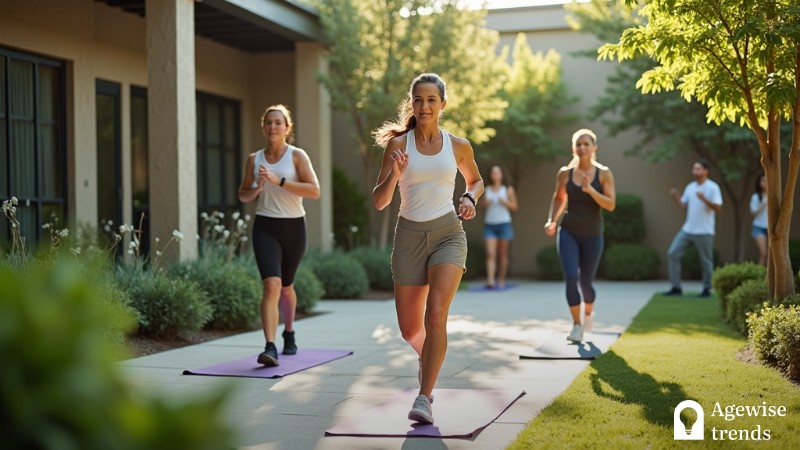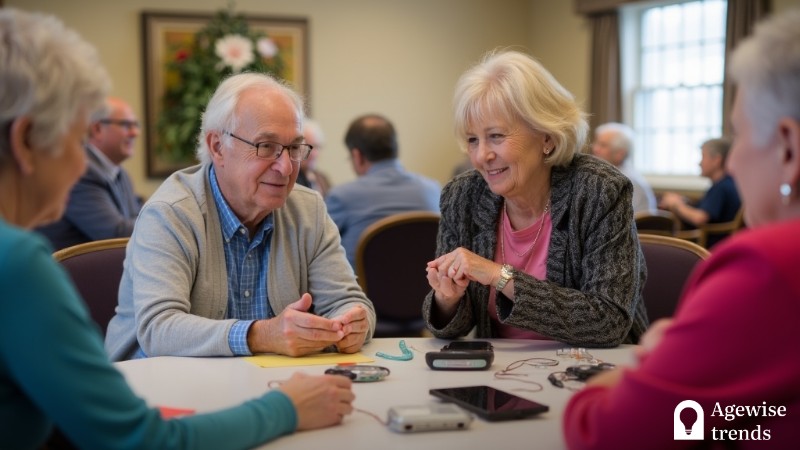Staying physically active is one of the most effective strategies for preventing or slowing the decline in physical function that comes with aging. Regular physical activity has been shown to reduce the risk of chronic conditions such as heart disease, stroke, and diabetes, while also improving cognitive function and mobility.
The 2018 Physical Activity Guidelines for Americans recommend a multi-component approach to exercise, including aerobic activity, strength training, flexibility exercises, and balance training. This combination of exercises helps older adults maintain their independence, improve quality of life, and reduce the risk of falls and injury.
Key Takeaways
Regular physical activity is essential for preventing or slowing the decline in physical function that comes with aging.
- Older adults should aim for 150 to 300 minutes of moderate-intensity aerobic activity per week, spread across at least three days.
- Muscle-strengthening activities at least two days a week can help combat sarcopenia and maintain muscle mass.
- Incorporating balance exercises, flexibility training, and strength training can enhance mobility, reduce fall risks, and improve overall quality of life.
The core components of exercise for older adults
To effectively promote healthy aging, older adults need to engage in a balanced exercise routine that addresses various physical needs. The following sections delve into the key components of such a routine, beginning with aerobic activity, which is essential for maintaining cardiovascular health and overall endurance.
Aerobic activity: Boosting cardiovascular health
Aerobic exercise is essential for heart health and preventing chronic conditions like hypertension and coronary heart disease. Older adults should aim for 150 to 300 minutes of moderate-intensity aerobic activity per week, spread across at least three days.
Activities such as brisk walking, cycling, or swimming contribute to this goal. For those unable to reach this target, any physical activity helps avoid a sedentary lifestyle, with tasks like gardening or walking to the store also counting.
Moderate-intensity exercises should allow for conversation but not singing, while vigorous activities like running or fast cycling can provide similar benefits in less time (75 to 150 minutes per week). The focus should be on consistent activity, gradually increasing intensity, frequency, and duration, especially for those starting from a sedentary level.
Muscle strengthening: Combatting sarcopenia
Sarcopenia, the age-related loss of muscle mass, significantly impacts mobility and increases the risk of falls and fractures. The 2018 guidelines recommend muscle-strengthening activities at least two days a week, targeting major muscle groups like the chest, back, arms, and legs. Exercises like weightlifting or body-weight activities (e.g., squats, lunges) help maintain muscle mass and everyday functioning.
For effectiveness, exercises should be challenging, with enough resistance to make further repetitions difficult. Older adults can start with moderate resistance and gradually progress to higher intensities as strength improves.
Even frail older adults can safely engage in high-intensity resistance training (up to 80% of their one-repetition maximum) with proper supervision. This enhances muscle strength and endurance, reducing fall risks and improving mobility.
Flexibility & balance: Enhancing mobility
Flexibility is key for daily function, and dynamic stretching (moving muscles through a full range of motion) is recommended before activities. Static stretching has limited long-term benefits for older adults. Yoga, combining stretching, strengthening, and balance, enhances flexibility, muscle tone, and fall prevention.
Balance training is crucial for fall prevention. Older adults, especially those with mobility issues, should practice balance exercises, preferably with supervision. Tai chi is an effective program for improving balance, coordination, and strength, reducing fall risk.
Practical tips for exercise progression and safety
For older adults starting an exercise program, it is important to gradually increase the intensity and frequency of activities. This helps to build endurance, strength, and mobility safely without risking injury. Older adults should aim for at least 30 minutes of activity on most days of the week, but even small increases in activity levels can provide significant health benefits.
Supervision and Support: Older adults should receive guidance when starting new exercises, especially strength training, to ensure safety. Supervision by a trained professional ensures proper technique and effectiveness. Programs can be tailored to health conditions, with modifications for joint pain or osteoporosis to prevent injury.
Motivation and consistency: Staying motivated can be tough for older adults with physical limitations. Finding enjoyable activities, such as group classes, walking with a friend, or joining community programs, can boost adherence. Consistency is key—regular exercise improves both physical health and mental well-being.
Exercise helps older adults maintain independence, reduce chronic disease risks, and improve quality of life. Incorporating aerobic activity, strength training, balance exercises, and flexibility enhances physical and cognitive function.















